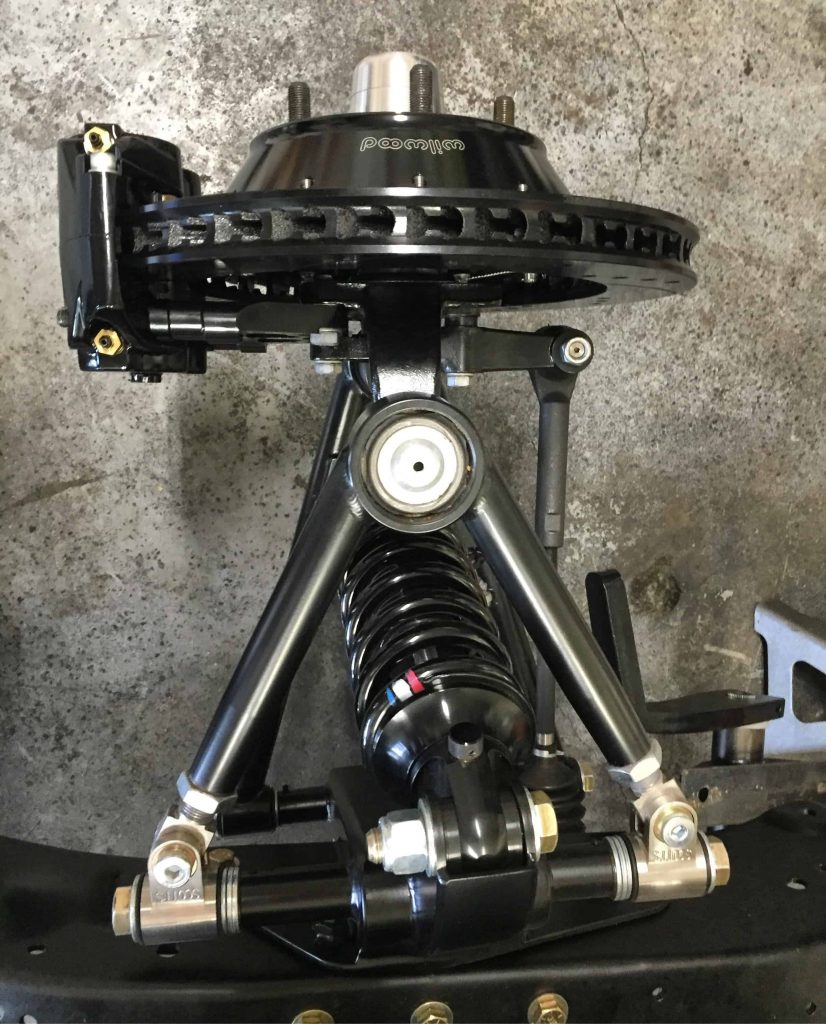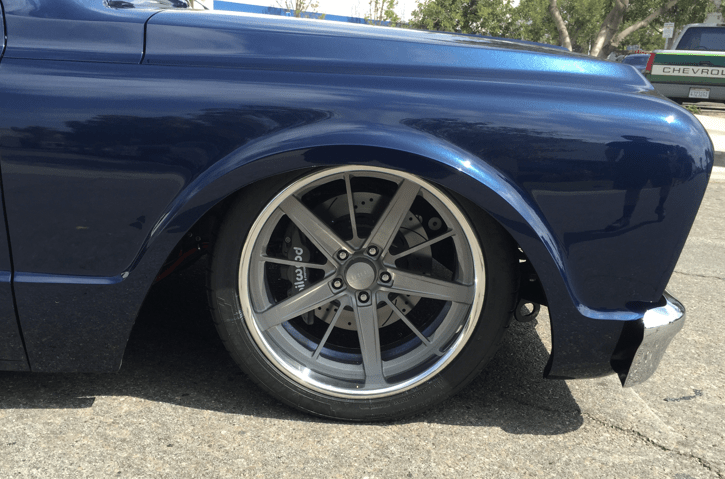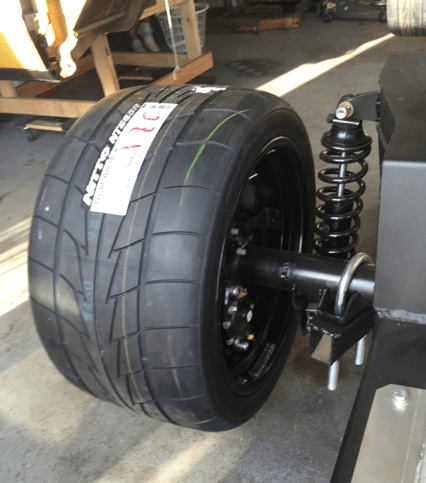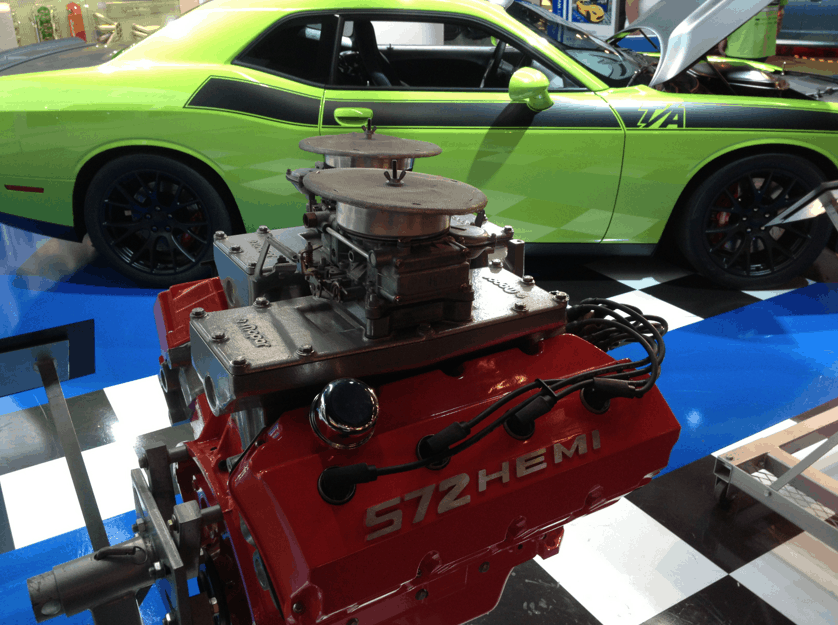What is Pro Touring?
What is Pro Touring?
Pro Touring is a hot rod term born out of the 90’s. It refers to any car or truck that has been modified in multiple areas to perform better than it did stock or from the factory. Pro Touring builds done correctly will meet or exceed modern day, OEM performance vehicles in the following areas of performance: Suspension, Steering, Brakes, Tires and Engine modifications. These five areas are the primary focuses for a pro touring car or truck build.
What upgrades are needed to build a Pro Touring car or truck?
Suspension
Suspension is one element that separates a pro touring build from any other build. Let’s take a 1969 Chevelle as an example car for updating the suspension for pro touring. Depending on your budget and skill level, there are several ways you could go to update the suspension on a 69’ Chevelle. Lowering the car’s center of gravity in combination with changing spring rates and upgrading to tuned shocks will drastically affect how a Chevelle handles on the street, autocross or track day event. Upgrading shocks and springs with swaybars or updating to coilovers with sway bars are two ways to lower your center of gravity and stiffen up your suspension for improved handling on a pro touring build.
Upgrading OEM control arms to aftermarket control arms does many things to the suspension as well. Aftermarket control arms are usually lighter and stronger than OEM. The additional strength in a good control arm will reduce flex and fatigue which is great for hard cornering. Aftermarket control arms can also provide greater turning and better geometry than OEM control arms. Aftermarket control arms can also allow you to run aftermarket shocks, coilovers, drop spindles and larger brakes – All elements of a true Pro Touring chassis.
Swaybars are one of the most cost effective ways to stiffen up a chassis and reduce body roll when cornering at speed. On the other side of the budget is going to a full custom chassis. Depending on the caliber of your build and the components you’re planning on running, a full custom chassis or complete IFS kit may be a cost savings in the long run (All depends on what level you’re looking to take your build to).
Steering
If you compare an old farm truck to a new Mustang one thing you’d notice immediately is the steering and how easy and effortless it is to turn the steering wheel in a newer Mustang. It’s easier in the new Mustang because from the factory, these cars come with power assist rack & pinion steering units. The power racks help push fluid through the system to help in moving the pinion gear on the rack as your turn the wheel. The old farm truck without a power rack & pinion steering setup is going to steer like a tractor at low speed (multiple turns to get the wheels to react to your efforts of turning the wheel) and will take a lot more effort to steer than a car with a power rack and pinion steering setup.
On your pro touring build, improving the steering is key to keep up with higher horsepower and modified suspension. You want your steering to be more responsive and smoother as your turning larger wheels and tires on your pro touring build. Power rack & pinions and IFS or custom chassis that included rack & pinion setups are key to rounding out your build.
Brakes
Pro touring builds are known for big brakes. What is the importance of those brake reservoirs and giant rotors and brake calipers? If you have drum brakes, old OEM disc brakes, large wheels/tires or your adding more horsepower to your build – you’ve got to be able to stop.
From the factory, classic muscle cars and trucks almost always had drum brakes in the rear and often times up front. If you’ve ever driven a car or truck with drum brakes on all 4 corners, you know how stopping power is reduced as the drums heat up. Upgrading to 20” wheels and dropping a 600 hp built LS3 into a muscle car designed to handle 300 hp is cool, but you have to be able to slow all that horsepower down. There are many aftermarket brake manufacturers out there that specialize in pro touring brake setups that fit OEM axles and spindles. Custom chassis, IFS kits and aftermarket control arms are usually designed to accommodate larger disc brakes which are perfect for pro touring builds.
Wheels & Tires
15” rallye wheels with redline tires look great. On a pro touring build most people want to have high horsepower, big brakes and a tuned suspension that’s totally lowered the vehicle and eliminated any and all fender gap. To set the ride-height off and make the look of a pro touring car or truck comes a decent set of wheels and tires.
On a pro touring build one of the main reasons you’d upgrade to a 18” or 20” set of wheels is for the fact that yes it looks cool, but more so for the fact that you’re running larger disc brakes and calipers to stop your built, high horsepower engine. Backspacing is key on your new wheels. Make sure you measure your makspacing so you can clear your new brakes. Going wide on wheels is beneficial because it will put more tire area to the pavement. More tire surface area will improve grip and offer better traction and overall handling when setup correctly.
When it comes to tires, tire manufacturers have been developing tire compounds specifically designed for the pro touring and auto cross markets. A good pro touring tire has grooves for weather on long distance drives, strong side walls for hard cornering and a rubber compound that is designed for street/track use. Low profile tires are a popular choice for pro touring builds as they deliver a great look by allowing larger wheels to be ran which sets off the overall stance of the vehicle. Low profile tires will allow one to run larger wheels and truly eliminate the fender gap classic muscle cars are known for.
Engine Performance
Updating the engine in a classic car or truck is often times the catalyst for a pro touring build being born. When older engines die and if the vehicle isn’t a numbers matching 1 of 1 build – Owners will pull the old V6 or V8 and go down the path of putting a late model engine like an LS or Coyote swap in their beloved classic. There’s so many great parts and technology currently available for engine swaps that it’s easier than ever to remove an old 300hp 350 small block and replace it with a late model engine that gets 20+ MPG, can run A/C and deliver 650hp+ with minimum bolt ons. (HP, MPG and A/C are all elements of a true pro touring build – Think street, race and cross country cruises).
Big horsepower means you’re going to need to update your suspension, brakes, wheels and tires to accommodate this modern powertrain in your classic car or truck.
Wherever you decide to begin, pro touring builds are a blast. Having a well rounded, tactical classic that offers late model creature comforts with a timeless look and style is something that makes pro touring style builds what they are today.
As a term coined in the 90’s, the pro touring movement is still alive and well today.
For pro touring suspension help, check out our full line of products and solutions here












